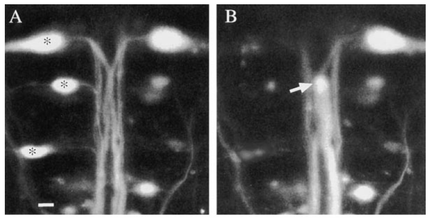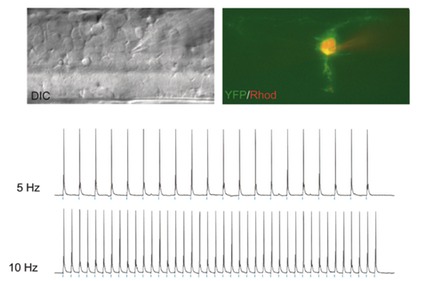In order to determine what neurons contribute to behavior we perturb them and assess how behavior changes. We do perturbations by using lasers to target individual nerve cells in intact animals, or by using light to activate or inhibit nerve cells (called optogenetics). The changes in behavior after these perturbations allow us to test ideas about what the cells contribute to behavior.

Using a laser to kill nerve cells in an intact animal. By targeting the nerve cells in the brain (marked by the asterisks on the left) with a laser, we could remove them, as shown in a later image of the same region on the right, and then test how the behavior of the animal changed. The arrow marks the axon of one of the targeted neurons that has not yet died.

Using light to activate nerve cells in the intact animal. We can introduce genes into the fish that lead to the ability to shine light on a nerve cell and activate it (an approach called optogenetics). This approach allows us to use flashes of light to drive activity patterns in neurons in the intact animal and observe the behavioral consequences. A neuron expressing a light activating gene for channelrhodopsin is shown on the top right. The bottom shows the voltage (Y axis) over time (X axis) of the neuron in response to flashes of light at the times marked by the blue tick marks below each panel. Each time the neuron was flashed it generated an action potential, the electrical event that is used for communication in the brain.